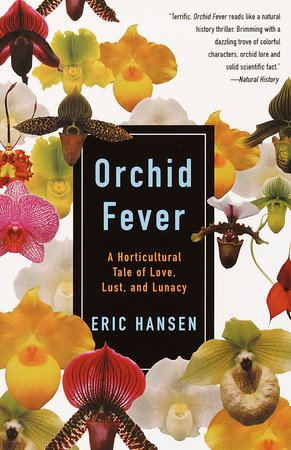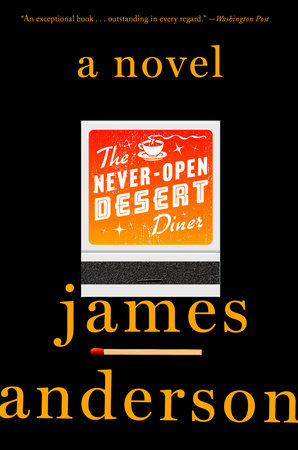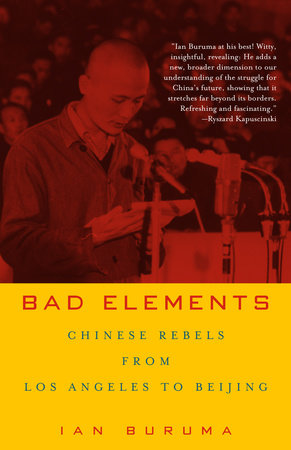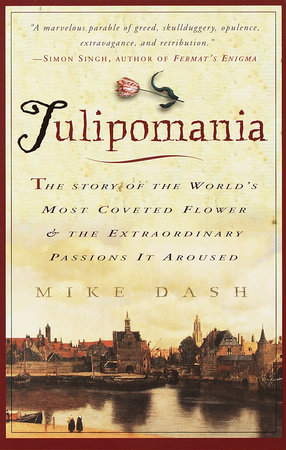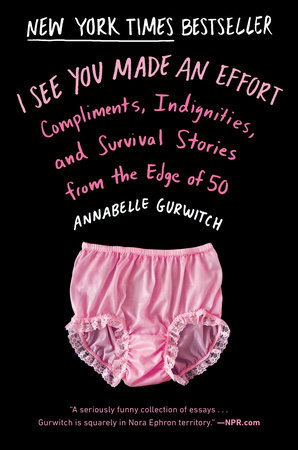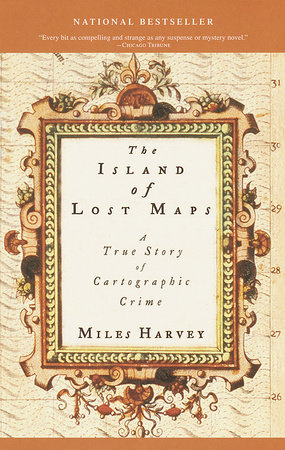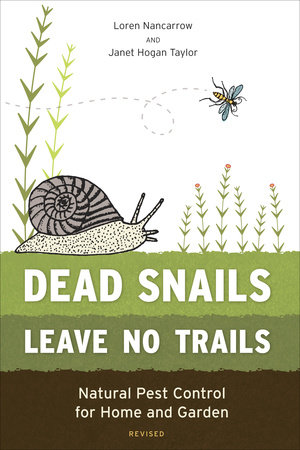A Conversation with Eric Hansen, author of Orchid Fever
Q: What made you want to write a book about orchids?
A: I don’t grow orchids, but in 1982 I spent about 7 months in the Borneo rain forest where some of the most beautiful orchids on earth can be found. I was living with a small group of nomadic hunters and gathers, known as Penan. At the time, these people had never seen tinned food, a telephone, or the ocean and they had little knowledge of life beyond the forest. I wrote my first book Stranger in the Forest, based on my time with the Penan, and ever since then I have felt a great debt of gratitude toward these people. In recent years logging has pretty well destroyed their traditional hunting grounds, and this made me think about how I could help them. In 1993 I went back to the Borneo rain forest to look into the idea of building an orchid nursery in their remote village. The plan was to salvage orchids from the fallen trees of a nearby logging concession. I soon discovered that the project and the orchids were doomed because of conservation laws that prevent the rescue and sale of rare orchids from endangered habitats. I became fascinated with these laws and this is what led to my interest in orchids and the orchid trade. I spent 7 years studying the problem and Orchid Fever is the result of that investigation.
Q: Some of the characters that you describe in ORCHID FEVER sound very strange. What is it about orchids that attracts these (and other sorts of) people?
A: People are mesmerized by exotic looking flowers, and like besotted insects, most people are instinctively drawn to orchids. Big, beautiful, sexy flowers seem to be the most common attraction, but there is far more to the orchid story than the showy flowers. Money, power and prestige attract a certain sort of person, but in the end I think that people simply enjoy the thrill of uncovering complex botanical secrets. Charles Darwin, while he was formulating his theory of evolution, became so intrigued by orchids that wrote an entire book about the relationship between these plants and their pollinating insects. Confucius called a certain species of Chinese orchid "The king of fragrant plants", Samurai cultivated orchids, and even people like Captain Bligh collected orchids. These plants have a long and rich history. They have managed to stir up the deepest of human passions and this attraction dates back to at least the third century B.C.
But, as most readers will soon realize, I spent most of my time on the lunatic fringe of the orchid world. Tales of murder, mayhem, betrayal, and greed caught my interest at an early stage. The odd characters that I met along the way made for some very interesting encounters. I have to admit that I am addicted to these sorts of people and their stories, plus I genuinely enjoy immersing myself in the lives of people who are so passionately interested in what they are doing. There is a very fine line between a visionary orchid grower and what I think of as the horticulturally insane, but the orchid world is also full of all sorts of fascinating people who are hopelessly enchanted by the process of learning to grow these fascinating plants.
Q: You mentioned orchids as being "sexy." What’s "sexy" about a flower?
A: Well, flowers are basically the elaborate stage settings for the sex organs of plants. In the case of orchids, the blatant carnality of the flowers is immediately evident, even to the untrained eye. George Bernard Shaw compared orchids to courtesans, Marcel Proust associated the plants to harlots and homosexuals, while John Ruskin considered orchids to be prurient apparitions. Orchids are all of these things, and much more. They can put on lascivious displays with their gaudy colors, intoxicating scents, veined pouches, erect curving shafts, glistening pink labial folds and inviting orifices. Once you know how to look at an orchid in full bloom, you understand why they are called "sexy" flowers. Orchids have some of the most immodest and outrageous flowers in the plant kingdom. But apart from how they smell, and what they look like, they have always been associated with sexuality. The word orchid comes from "orchis" which is Greek for "testicle." This is a reference to the paired, underground tubers that are found on many terrestrial orchids. According to the ancient "Doctrine of Signatures" it was thought that by eating these tubers, men could enhance their virility. Learned scholars in the middle ages even argued that orchids grew from the sperm of wild animals that had fallen to the ground. Several different species of orchids in Eastern Turkey are made into ice cream that is thought to be an aphrodisiac; and the vanilla bean, which comes from an orchid, has been used for hundreds of years as a seductive perfume. Even today, Shalimar, Jicky, and many other famous perfumes use vanilla to make the finished fragrance more lush and sensual. The book has entire chapters devoted to the subject of why these flowers are so sexy.
Q: I know that you are not an orchid grower, but do you have a favorite orchid?
A: With more than 25,000 naturally occurring species and perhaps 100,000 artificial hybrids to choose from, I can’t say I have a favorite, but the short list would certainly have to include the largest orchid on earth – Grammatophyllum speciosum. In the Borneo rainforest, where the plant is found, it can grow to 40 feet in circumference and weigh up to half a ton. A botanist once told me about a 19th century plant collector who was crushed to death by one of these monster plants while attempting to dislodge a specimen from a tall tree. I must have a strange sense of humor, because when I heard this story, I immediately developed a great affection for the man crushing orchid Grammatophyllum speciosum. Another orchid I adore is Ansellia africana. In the early 1930s, Zulu tribesmen were in the habit of placing leaves from this orchid in their armpits during courtship. The tribesmen would also make an infusion of the roots. This concoction acted as an aphrodisiac, and it was also thought to render unmarried women infertile for a night. This is a plant worthy of further scientific study.
Q: What else are orchids used for?
A: Just to give you a few examples: the split pseudo bulbs of Coelogyne asperata are used as blackboard erasers in the rural schools of central Sumatra, in Malaysia the roots of Cymbidium finlaysonianum can cure a sick elephant, and rural shoemakers in Guyana make a strong glue from a certain species of Cyrtopodium. Children in Honduras make trumpets out the hollow stalks of Schomburgkia tibicinis, and according to elderly Lodedu tribesmen in Transvaal, the chewed stem of the Lissochilus orchid performs the same function as Viagra.
Q: Aren’t orchids wildly expensive?
A: In the orchid world, stories circulate about how select breeding stock for rare species of orchids can sell for as much as $25,000 or more per plant. I have heard of one such sale, but no hobbyist and very few commercial orchid growers can pay this kind of money for one plant. A more realistic figure would be $3,000 to $5,000 for an award-winning orchid with a good track record. A valuable, pedigreed orchid like this would then be put into an intensive breeding program to produce tens of thousands of new plants to help cover the original purchase price. The stories about single plants being sold to wealthy collectors for 5 and 6 digit sums are nonsense. These tales are usually associated with questionable press releases that are designed to promote the myth that rare orchids are being collected to the point of extinction by "orchid smugglers." Habitat destruction is by far the most overwhelming threat to rare orchids and other plants worldwide. Unfortunately, many people who consider themselves to be conservationists remain fixated on the myth of orchid smuggling. At the very least, I hope that Orchid Fever will help correct this misunderstanding.
Q: You write quite a bit about orchid smugglers and their work. What exactly is an orchid smuggler?
A: That depends on who you ask. When I began researching my book on the orchid world, it was my intention to track down a few orchid smugglers and then explain how their activities were leading to the demise of rare orchids in the wild. I don’t want to give away too much of the book, but after about 18 months of intense research I had to throw out my original idea and rethink my approach to the subject. Based on court records, private letters, official correspondence, and hundreds of interviews throughout Europe, the USA and Southeast Asia, I had to admit that the ‘smugglers’ were beginning to look more like conservationists, and less like criminals. To add to the confusion, certain powerful botanical institutions and high profile botanists started to come across as ignorant thugs intent on maintaining exclusive use of rare plant material, at all costs. Subsequent meetings with these distinguished gentlemen merely reinforced my suspicions. While I struggled to digest this new and troubling material, my editor in New York was patiently awaiting chapters on the evils of orchid smuggling. I couldn’t bring myself to explain that I had changed course and was hard at work on a completely different book. It took nearly three more years to break the news to him, but by that time I had the documents to back up my claims about who was doing what to whom in the orchid world. The search for the truth took me on a very odd and circuitous route.
Q: But why did it take you seven years to research and write this book? You’ve told me that you’re not an orchid grower, yourself, so what sustained your interest?
A: Well, writing a book, any book, is a voyage of discovery. It develops a life of its own quite independent from what the author anticipates…or, as I have already mentioned, what the publishers have paid for and are expecting by a specific date. The original concept of Orchid Fever fell to pieces at a very early stage. Looking back at the original book proposal I have to laugh at where the material eventually led me. As for the long gestation period for the book, I am the sort of writer that follows the story, rather than the other way around. In this case, the story took me on a seven year journey through the dark corners of the orchid world. I needed to get answers to difficult and sensitive questions, and to find all the pieces of a very complex puzzle, and then fit everything together. There are other reasons why the book took so long to research and write, but this mainly has to do with the fact that I can be very stubborn when it comes to looking for information. Nothing catches and holds my interest more than being stonewalled or lied to by the authorities, and this is something that happened with increasing frequency as the story unfolded.
My journey into the orchid world has led to some wonderful friendships, and so on a personal level I didn’t want the work on the book to end because then my link to these people would be over. I have never felt the urge to grow orchids, but I still find it odd how this family of plants can stir such strong emotions. For me, this is part of the reason I find the orchid world such a fascinating place. Now that I have more or less disengaged myself, I feel a keen sense of loss. I started out writing about orchids, but by the end, my focus had shifted to the orchid people. Human nature is really what the book is about — obsession, political intrigue, jealousy, hope, passion and, of course, the elusive quest for the perfect flower. The subtitle really says it all: A Horticultural Tale of Love, Lust, and Lunacy.
Q: What are you working on next?
A: I am just about finished with a collection of essays and travel stories to be called Life at the Hotel Foxtrot, which is based on thirty years of travel. It is mostly about strange and unexpected meetings with people in remote places. After that I will get to work on a book about the history of cashmere. If all goes as planned, in April of 2000 I will be spending time with the nomadic goat herders of Mongolia, and later with the wool traders of Western Tibet, Nepal and Northern India. In 1975 I spent most of the year living in Tibetan villages along the border of Nepal and Tibet. I look forward to returning to the same general area. The idea for this new book started in Paris last January. I stopped in front of a store to look at a finely embroidered Kashmir shawl. I am still not certain how this shawl and the subsequent conversation with the store owner led to the idea for a book, but over the years I have learned to surrender to the material at an early stage. In the end, I know the book will write itself.
